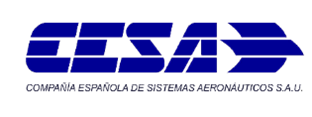CESA leads the R&D+i PRO-SURFACE program “Development of a new generation of environmentally friendly surface coatings and treatments for aeronautical components”
The PRO-SURFACE Project is financed and sponsored by the Ministry of Economy and Competitiveness (MINECO) of Spain, as the goals of the Project are aligned with priorities R4 and R5 established in the challenges of the R&D+i national program addressing the challenges faced by society on intelligent and sustainable transport, actions against climate change and efficient use of resources and raw materials. In addition, this program fits in with the main European strategies regarding a more efficient use of resources and environmentally friendliness in air transport (ACARE, FlightPath2050, Horizonte 2020)
As part of its search for alternatives to replace some of the highly-polluting surface treatments used currently, this program has 3 well-defined technical goals or lines of action. Firstly, the development of alternative treatments for salt bath oxy-nitriding processes, such as post-discharge plasma; secondly, PRO-SURFACE pursues the development of innovative thermal spray coatings (HVOF-LF; HVOF-Air and Cold Spray) as an alternative to hard chroming. A final goal is developing Zinc-Nickel coating as an alternative to electrolytic cadmium plating of carbon steels extensively used in the aeronautical industry.
CESA has very specific objectives in the Project. The main interest is to define an internal standard for Zn-Ni application that allows a gradual replacement of cadmium in both new and old programs. With regard to thermal spray treatments, CESA intends to demonstrate that HVOF is equivalent to SDGUN, currently used in Sikorsky train parts. Finally, with regard to research on more sustainable oxy-nitriding methods, CESA intends to find specific solutions to the tribological and corrosion problems experienced by some equipment.
In addition to CESA, the Project consortium includes highly relevant partners in each of the development fields considered with a view to industrial implementation, such as the firms Tratamientos Superficiales Iontech S.A. (IONTECH), Tratamientos Térmicos TTT S.A. (TTT), and the private research center Tecnalia Research & Innovation (TECNALIA).
IONTEC, which is part of the TTT Group, has extensive experience in thermal spray technologies such as HVOF-LF. In addition, TTT is an expert in nitriding technologies, and will lead this activity in the program. Finally, TECNALIA centers its participation in the development of the aforementioned new treatment and coating processes, as well as their evaluation and testing.



The program kick-off meeting took place at CESA on September 29th with the presence of all consortium members. The expected duration of the Project is 31 months, in which the various tasks of the 3 research lines will be developed in parallel, starting by defining the specifications and ending with the execution of test son the various selected demonstration specimens.



Figure 1. Pilot plant for post-discharge plasma technology.


